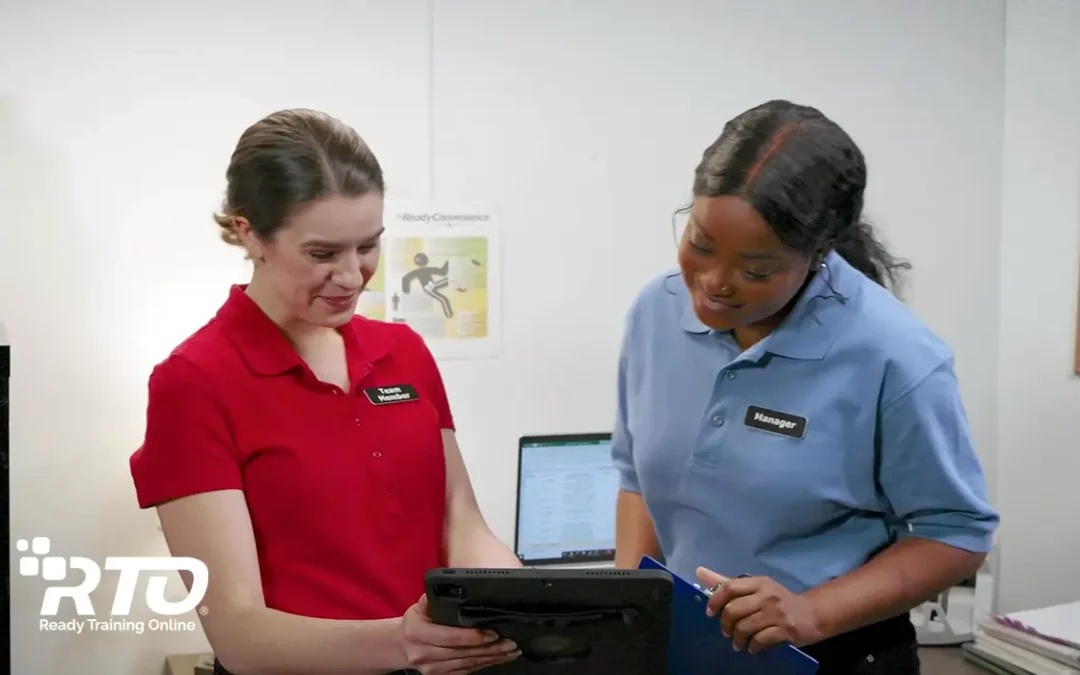Convenience stores are fast-paced environments, so it’s important to get employees trained and onto the floor quickly. However, it’s also important to make sure that they fully understand their training and are ready to provide quality service while maintaining compliance. Your employees all learn in different ways, and what helps one may not be beneficial to another. Therefore, it’s important to fully invest in their training to ensure they learn in a way that is effective for them. This involves implementing blending learning as part of your training program.
What Is Blended Learning?
To put it simply, blended learning involves using more than one method of training to reinforce the topic. You may have read a lot about hybrid learning in relation to education in the last few years, and the idea is not that different. Examples of blended learning include:
- Mixing classroom instruction with digital eLearning
- Incorporating one-on-one role playing with group learning
- Using on-the-job training to complement online learning
You can mix and match any number of training methods to create a blended learning program that will reinforce training for your employees.
Blended Learning in a Convenience Store
You may be saying to yourself that this sounds great for some businesses, but it would never work in my store. It’s true that what works for one organization may not always work for another, but there are many ways that you could implement blended learning into your convenience store training program to benefit your employees, and, ultimately, your business. Here are a few ways you could implement blended learning for your employees.
Alcohol Compliance Training:
If your store sells alcohol, then compliance is an important training topic regardless of whether or not your state has specific training requirements. Using a blended learning approach will help employees to better understand their training, and put what they’ve learned to use during alcohol sales. Here’s are examples of how that can be done.
Day One: On the first day of training, new hire Steve takes the Alcohol Sales training module available in your store’s learning management system (LMS). This module includes interactive quizzes and exams to test Steve’s understanding of the material. After taking the alcohol module on the LMS, the training manager provides Steve with a document that outlines store-specific policies for age-restricted sales that were not covered as part of the module. Steve reads over the document, then returns to the LMS to answer several questions to test his understanding of what he read.
Day Two: On the second day of training, Steve is paired up with another new hire, Bethany, to take turns role playing various alcohol sales scenarios and familiarize themselves with the process.
Customer Service Training
Customer service is the backbone of your store – you want your customers to enjoy their experience and keep coming back. Therefore, you want to ensure your new employees are learning are well-trained on providing good customer service.
Day One: On her first day of training, new hire Bethany is assigned a customer service training module in the LMS. This module includes various real-life scenarios and instructions for providing good customer service. At the end of the module Bethany takes a 10-question exam testing her on her understanding of the training. Once Bethany has successfully completed her training in the LMS, she is paired with Erica, an experienced employee, on the floor to shadow her and receive on-the-job training. Erica demonstrates proper customer service techniques while working at the cash register.
Day Two: One her second day of training, Bethany is provided with a document outlining the store’s customer loyalty program. Once she has read through the details, she logs into the store’s LMS and takes a short quiz on her understanding. While in the LMS Bethany sees she’s been assigned a training on suggestive selling techniques. She takes that training and passes the exam at the end. Finally, Bethany is paired up with Steve to role play techniques for suggestive selling and offering the customer loyalty program.
These are just a few examples of how you can make blended learning work for you as part of your training program. Implementing a blended learning program is easier than it sounds, and the results will make it worth the effort.
Blend Learning Strategies With trainingGrid®
trainingGrid® is an LMS developed with you and your employees in mind. Its intuitive design makes learning management simple and allows employees to begin training with just a click. This flexible system comes with a variety of robust features customizable to fit your needs in addition to built-in reporting and certification tools that track your compliance documentation.
Request a guided demonstration of trainingGrid® today!





